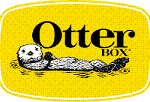Service objectives
The following list represents the Key Service Objectives (KSO) for the Appleton Greene Product Management service.

Market Analysis
Market analysis is the foundation to your current and future business success and is part of the Business Planning function. This objective focuses on the effectiveness of your market analysis process and can include: information sources and resulting inputs; key contributors to the analysis process; the actionable quality of the outputs from this effort; effective time horizon boundaries; and timely cadence of outputs. There can be numerous sections addressed in a market analysis but in most cases the following 8 are used for an effective market characterization process, each with their own inputs, analysis process, and subsequent output. First is a general market description including market state (current and anticipated), the market ecosystem that surrounds this market today and how it might evolve, market sizing methodology, and trend identification. Next is a customer attributes section including the customer problem or desire, any current solutions that are in use today, unmet needs/drivers creating the new opportunity, how customers measure solution value, customer purchase habits, and anticipated customer evolution. Typically the next section is a customer segmentation process methodology addressing commonality that can be leveraged across multiple segments, key customer expectation or capability differences between segments, segmented customer usage models, segment sizing and prioritization, anticipated common or segment trends, and customer purchase process by segment. Following segmentation is a by-segment customer’s purchase analysis describing the channels and channel attributes where these segments purchase. In most cases this involves a multi-channel analysis describing: the channel type; key accounts and their capabilities; account expectations regarding their gross margins; account planning cycles and lead times; ease-of-doing-business expectations; service levels expectations; and expectations of your predictability. Next is the analysis of any seasonality in this market and how it could affect your business regarding product launch windows, promotional timing, and any anticipated revenue fluctuations. Sixth is an analysis of outside forces that could affect your market including: technology; commodity pricing; economic conditions (e.g. is your product a necessary purchase or discretionary purchase); regulatory changes; exchange rates; etc. Next is a description of any barriers to entry that would impact your potential success in this market. Typically the final section is an analysis of potential supporting players in this market that would reduce your risks or increase your success in this market. As you can see, your market analysis provides key information to your next release of products as well as strategic inputs into your long range planning process. The output of this objective is an unbiased SMART (Specific, Measurable, Actionable, Relevant, Timely) assessment and potential corrective actions for your organization’s market analysis process. Consulting services for potential corrective actions for improving market analysis results can include: process creation or modification; policy creation or modification; creation or modification of tools, deliverables and communication flows; training delivery.

Competitive Analysis
There is always competition facing your business either directly or indirectly impacting your success. If you feel you don’t have direct competitors this indicates one of two challenges for your business: does this market even exist if no one else is doing this solution (the assumption is that your market analysis does prove the existence or potential for a new solution category); or once you enter this new category, competition will not be far behind! This objective focuses on the effectiveness of your competitive analysis process, also part of the Business Planning function, and can include: information sources and resulting inputs; key contributors to the analysis process; the actionable quality of the outputs; and how the process ensures timely identification and potential responses to competitive trends and specific competitor moves. To a large extent, competitive analysis needs to be driven by how your segmented customers perceive the value of the competitor’s offering but also includes competitor business attributes that indicate their capabilities and future direction. Fortunately, in many cases, the internet has made gathering a portion of customer perceptions easier than it was in the past although these must be kept in the perspective of how qualitative versus quantitative this information really is and to deeply understand the customers’ perception of competitors requires a more holistic look than just a “vocal few”. The competitive analysis assessment can include: how effectively the analysis addresses the overall competitive landscape in your targeted market(s); the depth of understanding for the top 3 to 5 direct competitors regarding the customer experience they deliver; your analysis process of how those competitors may move forward and/or respond to competitive threats; what are your anticipated advantages over the key competitors; your process for assessing your business’ vulnerability to competitors and potential response. As with your market analysis above your competitive analysis provides key information to your next release of products as well as strategic inputs into your long range planning process. The output of this objective is an unbiased SMART (Specific, Measurable, Actionable, Relevant, Timely) assessment and potential corrective actions for your organization’s competitive analysis process. Consulting services for potential corrective actions for improving competitive analysis results can include: process creation or modification; policy creation or modification; creation or modification of tools, deliverables and communication flows; training delivery.

Solution Strategies
As a third part of the Business Planning function, the goal of the Solutions Strategy effort is to describe the “ideal” customer solution from your customer’s viewpoint. Solution Delivery, described below, uses this to determine specific products or product generations and their delivery timing. This objective focuses on the effectiveness of your solutions strategies process translating market analysis and competitive analysis results into the ideal total customer experience benefits your solution(s) should deliver and can include: information sources and resulting inputs; key contributors to the analysis process; the actionable quality of the outputs; and how the process ensures timely identification and potential responses to competitive trends and specific competitor moves. The solutions strategy assessment can include: segment selection process; completeness of your ideal customer experience specification process; business model and potential pricing analysis process; functional/organizational capabilities specification process; market readiness analysis process; opportunities and risks analysis process. The output of this objective is an unbiased SMART (Specific, Measurable, Actionable, Relevant, Timely) assessment and potential corrective actions for your organization’s solution strategies process. Consulting services for potential corrective actions for improving solution strategies can include: process creation or modification; policy creation or modification; creation or modification of tools, deliverables and communication flows; training delivery.

When is just as important as what!
Appleton Greene & Co Global – All businesses have an internal cadence typically driven by their fiscal year for business planning and other internal efforts. Fewer have a cadence for their customer-facing and channel-facing efforts that address product planning, account planning, budgeting, product launch, marketing mix strategy and tactics, and product transitions to name a few. And this externally focused cadence must be driven by customer seasonality. For FedSLED this seasonality typically is driven by fiscal years. For consumers this may be driven by holidays, calendar events (back to school, graduation) or seasons. And while overall B2B may not be as dramatic, this sector usually is not purely linear and can also see volume peaks and valleys depending on the solution category and their customers being driven by the seasonality factors listed above. So why does this matter? Having the right customer-focused cadence allows you to: maximize sales at your maximum price; preserve competitive advantage to the last possible moment; maintain sales velocity by adjusting your marketing mix to the season; actively and collaboratively capitalize on your channel’s planning and actions as they follow their targeted customer segments’ seasonality; actively manage your inventory to reduce cost-of-capital and price-protection exposure; and preserve profits during product transitions. Product management is more than a job title, it is a cross-organization discipline; and Appleton Greene’s Product Management consulting service is ready to work with you to use your customers’ seasonality to define and implement a customer-facing business cadence and processes that enables optimal product and product portfolio results.

Solution Delivery
As noted above, Services Objectives 01 – 03 above focus on the Business Planning function and how the product management function supports anticipating the target market, competitor and ideal solution evolution over time to enable your organization to proactively adapt and stay relevant to target customers. The Solution Delivery Objective is all about your product management function’s ability to translate Business Planning outputs and solution-specific tactical customer research into actionable specifications, objectives and tactics for implementation and ultimately deliver of one or more immediate total customer experience solutions, and the supporting processes, policies and actions required the across that solution’s product lifecycle enabling consistent profitable delivery. The assessment can include: cross-functional planning processes for requirements gathering and trade-offs addressing solution definition, demand generation, purchase process, solution fulfillment, and customer satisfaction; the functional capability assessment process addressing requirements, ability to deliver and gap reconciliation process; ongoing customer experience communication flows across the vertical functions; assessment of strategies and processes that ensure synchronization across the vertical functions; alignment of the solution lifecycle to customer seasonality and the enablement of optimal processes and policies by lifecycle phase; the solution transitions process (obsolescence, pre-launch and launch) for profitably migrating from solutions in the market today to coming next generation solutions; indirect channel account planning; and identification of potential gaps and “white space” breakdowns between vertical functions during solution delivery and management. The output of this objective is an unbiased SMART (Specific, Measurable, Actionable, Relevant, Timely) assessment and potential corrective actions for your organization’s solution delivery processes. Consulting services for potential corrective actions to improve solution delivery results can include: process creation or modification; policy creation or modification; creation or modification of tools, deliverables and communication flows; training delivery.

Effective Metrics
The Effective Metrics objective focuses on the use of metrics to enable consistent successful delivery of your total customer experience. It is well understood that metrics drive behavior and so establishing a correct metrics system for customer experience is critical to sustainable success. As previous discussed, customers focus on the value an organization’s solution delivers based on their perception of the experience and unfortunately customers don’t care about an organization’s internal trials, tribulations, or costs that the organization incurs in that delivery. This means that your metrics set needs to include both a well-defined set of customer-driven effectiveness metrics and a corresponding set of internal efficiency metrics for a delivering superior customer experience while maintaining or increasing your profitability. These two sets of metrics need to be tightly interlocked and ideally cascade from the customer experience set into the internal delivery efficiency set. The challenge many organizations can have with metrics can include: the customer gets “lost” in establishing metrics; the metrics didn’t evolve with changing market and customer expectations over time; metrics reporting is more of a “grab bag” set of metrics than a cascading structure to enable context and subsequent drill-down for root cause diagnosis; lack of common understanding about what the defined metric indicates and how it is calculated; lack of governance allowing metrics to devolve into a set of “be interesting to also see” meaningless metrics that mask the critical few; metrics that only present isolated snapshots versus meaningful trends; conflicting metrics that cause conflicting actions between departments or functions; lack of anticipating the behavior or side effects the metric may drive; ineffective time sampling either delivering “noise” through oversampling or through delayed sampling missing a critical emerging trend. The Effective Metrics assessment can include: are the right metrics being reported to the right audience, is the sample rate correct; are the metrics customer-driven or “noise” that distracts; are the metrics showing trends or just a snapshot that may be aberration versus developing situation; do the metrics logically cascade to enable a “drill down” to actionable root cause diagnosis and correction; are the communication flows delivering the right actionable metrics to the right audience; is there an effective governance process for metrics creation and modification; and is the right owner held accountable for a metric. The output of this objective is an unbiased SMART (Specific, Measurable, Actionable, Relevant, Timely) assessment and potential corrective actions for your organization’s effective metrics process. Consulting services for potential corrective actions to improve metrics results can include: metrics definition or redefinition, development or clarification of how the metrics cascade; metrics process creation or modification; metrics governance creation or modification; creation or modification of tools, deliverables and communication flows; training delivery.
This service is primarily available to the following industry sectors:

Technology
The goal of any for-profit business is to make money today and even more money tomorrow to meet shareholder expectations, enable investments for the future, and remain a relevant market participant. Since revenue growth is a key indicator of consistently meeting or exceeding customer expectations, ideally business strategies focus on increasing revenue while managing cost as a percent of revenue. To accomplish this, businesses look to the broad array of technology sector players for ways to significantly increase value and enable higher end customer solution price points, increase solution value at the same price for a competitive advantage, and/or reduce fixed or variable costs for the business. In addition to for-profit businesses, many technology sector businesses serve government (FedSLEd and military) and non-profit organizations either leveraging the same for-profit solutions or providing specialized solutions. As defined here, the technology sector spans from components and devices, to software tools, applications and infrastructure solutions. Additionally, many technology providers include consulting and support services required to utilize the technology delivered. The common theme for the technology sector is this is a non-consumer sector and instead purely business-to-business with attributes including: adoption driven by anticipated competitive advantage and/or cost savings; lower price sensitivity; longer and more complex sales cycles involving multiple customer decision maker roles; longer product lifecycles; potential partnering for vertical or customized solutions; a “high push” sales model utilizing direct and/or VAR sales forces actively prospecting for customers and delivering a high touch consultative purchase experience; potentially unique supply chain requirements; and a variety of service revenue opportunities (consulting, training, e-services). These attributes drive the need a very different total customer experience compared to a consumer experience starting with the need to understand both the technology customer’s desired experience and ideally the technology customer’s end customer. Additionally, technology sector businesses need to demonstrate to customers: sound business continuity capability; flexibility in meeting unique customer needs; and organizational discipline in partnering with customers on lifecycle management including product development, delivery and ongoing service and support.

Electronics
Since the Technology Sector discussion above focused on business-to-business, this Electronics Sector discussion focuses on consumer information technology (PCs, printers, tablets and accessories) and entertainment devices (TVs, home theaters and Blu-ray players). Electronics Sector purchasers’ primary drivers are price points and anticipated emotional benefits delivered. In fact with consumer sales, correctly using psychological price points can drive sales volume changes resulting allowing optimization of total gross margin dollars for a product or product family. Consumer products also have fast sales cycles when compared to the B2B technology sales cycle above and rely on a consumer “pull” model where demand generation activities focus on driving customers to the point of sale (for more see Retail Sector below). This drives a critical need for brand management and collaborative category planning with channel partners. Once consumers have purchased a product, they want to get to the destination of realizing products benefits as quickly as possible; making the journey of unpack, setup, configure, and learn potential impediments to reaching the benefits and so need to be minimized and/or streamlined as much as possible as part of their experience with a product. Consumers also have more access to and share more information about products than in the past so total customer experience with a product can rapidly generate positive or negative reviews that significantly impact future sales. In the past, consumer products had fast product lifecycles, rapid price erosion, and low or no switching costs when consumers upgraded devices. However, the consumer electronics market is now seeing many products being part of a consumer’s electronic ecosystem so vendors need to pay more attention to design changes that impact the ecosystem where the product is used. An example of this is Apple switching from their 30-pin cabling to the Lightning connector. In isolation this would not have had a large impact however in the accessory ecosystem however this move obsoleted not only the extra charging cables a consumer may have purchased with a previous device but also obsoleted products that allowed docking via the 30-pin. This cabling example was a very contained example of an ecosystem impact. Taking a broader view, in the past each electronic device was a relatively isolated point product or a micro ecosystem “island” (e.g. a home entertainment center). However, going forward with the continued expansion of Bluetooth and Wi-Fi connectivity, more and more consumer products are becoming part of consumers’ macro home ecosystem. Amazon, with Alexa, FireTV, and content services, and Apple, with iPhones, iPads, Apple TV, iWatch, licensing iOS to auto manufacturers, and content services, are great examples of vendors building out consumer ecosystem product lines and both are also partnering with other vendors to include home automation as part of their ecosystem plays. While fast product lifecycles are still a key success factor for electronics, the need for backwards compatibility and seamless integration into existing consumer ecosystems to protect prior consumer investments are a growing requirement. Refer to the Retail Sector discussion below regarding requirements to sell consumer products through retail.

Consumer Goods
Since consumer electronics is discussed above, the focus here is on mechanical, electro-mechanical, and electrical durable goods (>=3 year lifespan) and non-durable goods (<3 year lifespan). Both categories share an interesting history of transformation over time. Taking a very high level historic view, these consumer goods initially focused on improving basic functionality of daily life. A very few examples are: replacing manual processes (e.g. washing machines replacing doing laundry by hand in a washtub), improving effectiveness (Refrigerators replacing ice boxes), accelerating transportation (cars, trucks, railroads and aircraft replacing horse-drawn carriages and wagons). Many of these improvements could not be done standalone but instead were creative outcomes of advances in infrastructure and/or enabling technologies to produce paradigm-shifting solutions. And while history typically doesn’t exactly repeat but does tend to rhyme, many established consumer goods categories could be said to be on an evolutionary curve similar the evolution of consumer computing; i.e. driven by competitive forces, enabling technology and consumer desires. This macro evolution tends to flow along the following lines of: invention of basic functionality; functionality-oriented basic industrial design; internal technology changes for reliability; performance or cost improvements; basic controls improvements; emergence of built-in and/or aftermarket accessories to increase features; enhanced industrial design to address style, and provide alternate form factors; enhanced user experience via new enabling technology including digital input and displays. Taken in the aggregate context the impacts of these changes tend to move from macro changes to more ongoing micro refinements. A potential risk in this type of evolution is that a business can become myopic and entrench on just micro changes to existing product lines while missing a category paradigm shift that could deliver significant new growth opportunities or worse, result in the business being niched in the old paradigm of a declining market. Businesses should to try to mitigate this risk by ensuring their market analysis and competitive analysis functions scan for emerging technologies and trends that could signal a paradigm shift and include identifying potential adjacent space markets (e.g. a refrigerator manufacturer considering portfolio expansion to other kitchen durable goods categories) where they can capitalize on their brand awareness and internal competencies common to the broader category. Refer to the Retail Sector discussion below regarding requirements to sell consumer products through retail.

Retail
How retail works cannot be completely covered here so this section focuses on the consumer selling motion and channel requirements for consumer product success with electronics, consumer goods, and consumer-oriented telecom devices. Whereas B2B sales are typically real-time 1:1 complex sales interactions actively working to move customers through the purchase process, retail sales are consumer self-paced and demand generation processes are more formulaic in leading customers from initial awareness to actual purchase. The complexity of retail success resides in creating consumer demand, retail account planning and management, and predictable execution. Retail is all about understanding the desired consumer purchase experience and how effectively and efficiently vendors collaborate with retail accounts in delivering that total experience. Defining channel and account strategies for retail requires an understanding where targeted consumer segments prefer to buy, and the shared and unique experience requirements. Brick and mortar requirements can vary further based on their category types that include: national retail, regional retail, membership warehouses, mass merchants, specialty stores, and even embedded brand stores (Apple, Magnolia Design Centers and cell phone carriers in Best Buy for example), within a more general store format. Generally brick and mortar shopping delivers: a social experience (hopefully a good experience); the ability to touch and see some products in use; the potential for some level of knowledgeable sales person; and instant gratification of leaving with the product in hand. However some downsides for brick and mortar can include: brick and mortar’s reliance on foot traffic driving potentially expensive geographic coverage, balancing staffing expense with consumer desired service levels, inventory logistics and balancing, shrinkage (theft both out the front and potentially back door), unanticipated low velocity and/or low volume products taking valuable floor space, and the emergence of e-tailers (online retail) like Amazon increasing price competition and the risk of “showcasing” where consumers go to the store to see products but buy online. E-tailers and traditional brick and mortar accounts that have added e-tailing capabilities have the advantage over pure brick and mortar retailers of: zero incremental cost for geographic coverage; the ability to provide more immediate product information and consumers reviews; the ability to more easily track their individual consumer’s browsing and purchase patterns to enable and push tailored offers to registered customers; are in essence open 24/7; and can add, delete or reset their product offerings and pricing much more rapidly than a physical store. Beyond the essential efforts of triggering consumer demand for their retail products, vendors in the retail space not only need to provide quality products but also must have a high degree of operational excellence to meet retail channel needs profitably. The operational excellence required can include: developing a clear channel coverage strategy and associated ROI by retail account; meeting account-internal deliverables required for product set up and ongoing communications including potential Electronic Data Interchange requirements; clear decisions regarding potential needs for product derivatives and/or Minimum Advertised Pricing policies and enforcement mechanisms to minimize price erosion driven by competing retail accounts; understanding and delivering on in-store placement and display requirements; meeting lead times for advertising and promotions; matching internal planning cadence and processes to retails’ long-lead planning cycles; understanding price discounts and other costs of doing business with an account; matching internal metrics to the account scorecards and policies; matching internal functional contacts to corresponding account functions; stringent inventory management and product transition processes to match account service level agreements; collaborative product planning, launch planning, and roadmaps for future products; meeting account packaging specifications while maintaining the key role packaging plays in the consumer purchase decision; and knowing which accounts are capable of participating in emerging category products versus only capable of success with well-known products.

Telecommunications
With the pervasive connectivity provided by broadband over T1, cable, DSL, fiber optics or satellite, cellular networks, Wi-Fi, and Bluetooth, telecommunications spans both business and consumer markets. Telecom products, driven by industry-defined standards, seamlessly integrate into network infrastructures to provide reliable communication and data transfer between various systems and devices on a network. Telecom can be segmented into 3 markets consisting of business, home environments and mobile environments. Business continuity is mission-critical so businesses tend to use 99.9% up-time as baseline expectation for their telecom infrastructure metric since any downtime can result in losses scaling from relatively minor (lost productivity) to catastrophic (lost revenue or data). Utilizing the B2B sales cycle discussed in the Technology Sector above, telecom vendors and/or system integrators need to: demonstrate the robustness of proposed solutions including environmental tolerances and mean time between failure (MTBF) projections for systems and subsystems; meet design requirements including hardware and software security methodologies and solutions; ensure implementation of required redundancy and reliable fail-over capabilities; provide design and implementation support services either directly or through certified 3rd parties; provide overall training on the final implementation; and offer infrastructure management options utilizing in-house resources or qualified outsourced resources trained in managing the components and systems in use. Additionally, businesses typically require these management and repair resources be on-call 24x7x365 and may even require prepositioning of spare components or systems to minimize time lost in replacement logistics. Fortunately home-based telecom environments, using an ISP modem and Wi-Fi in-home connectivity for internet, content streaming services and gaming, are not defined as mission-critical but consumers do expect it all to “just work”. And since it would be cost prohibitive for consumers to employ redundancy and infrastructure management specialists, consumers tend to tolerate some failures as long as the environment self-recovers or, worst case, it is easy for the owner to diagnose and manually recover connectivity. These expectations require consumer telecom vendors to deliver typically sub $100 devices that are easily understood in the retail purchase process, easy to set up and configure, and require minimal or no intervention when in use. Unfortunately for the consumer, there is still a ways to go for vendors to meet these expectations so households need at least one reasonably tech-savvy in the family that hopefully will not be leaving for college or moving out before sharing their understanding of the home’s environment. Lastly, the mobility segment provides connectivity for business users and consumers almost anywhere via carrier networks and private or public Wi-Fi hot spots. For consumers this is enabling a paradigm shift to personalizing communication and one side effect be the diminishing desire for land-line phones into the home. For business, the paradigm shift can include but is not limited to: the enabling of geographically dispersed workforces beyond just corporate owned satellite offices; supporting remote sales and or service representatives through electronic information access; and enabling real-time factory, warehouse, route sales and delivery service tracking data. The business challenges with both workforce dispersal and mobilization of sales and service are providing robust and secure access to the corporate infrastructure and the increasing complexity of remote management and support of a wide array of phones, tablets, computers, and tracking devices that most likely are not all using the same operating system or operating system version.
Bronze Service

Monthly cost: USD $1,000.00
Time limit: 5 hours per month
Contract period: 12 months
Bronze service includes:
01. Email support
02. Telephone support
03. Questions & answers
04. Professional advice
05. Communication management

SERVICE DESCRIPTION
The Bronze Client Service (BCS) for Product Management provides clients with an entry level option and enables client contacts to become personally acquainted with Mr. Lumb over a sustainable period of time. We suggest that clients allocate up to a maximum of 5 Key Employees for this service. Your Key Employees can then contact the consultant via email, whenever they feel that they need specific advice or support in relation to the consultant’s specialist subject. The consultant will also be proactive about opening and maintaining communications with your Key Employees. Your Key Employees can list and number any questions that they would like to ask and they will then receive specific answers to each and every query that they may have. Your Key Employees can then retain these communications on file for future reference. General support inquiries will usually receive replies within 48 hours, but please allow a period of up to 10 business days during busy periods. The Bronze Client Service (BCS) enables your Key Employees to get to know their designated Appleton Greene consultant and to benefit from the consultant’s specialist skills, knowledge and experience.
Silver Service

Monthly cost: USD $2,000.00
Time limit: 10 hours per month
Contract period: 12 months
Bronze service plus
01. Research analysis
02. Management analysis
03. Performance analysis
04. Business process analysis
05. Training analysis

SERVICE DESCRIPTION
The Silver Client Service (SCS) for Product Management provides more time for research and development. If you require Mr. Lumb to undertake research on your behalf, or on behalf of your Key Employees, then this would understandably require more time and the Silver Client Service (SCS) accommodates this. For example, you may want your consultant to undertake some research into your management, performance, business, or training processes, with a view towards providing an independent analysis and recommendations for improvement. If any research and development, or business analysis is required, then the Silver Client Service (SCS) is for you.
Gold Service

Monthly cost: USD $3,000.00
Time limit: 15 hours per month
Contract period: 12 months
Bronze/Silver service plus
01. Management interviews
02. Evaluation and assessment
03. Performance improvement
04. Business process improvement
05. Management training

SERVICE DESCRIPTION
The Gold Client Service (GCS) for Product Management is intended for more detailed evaluation and assessment, that may require your Key Employees to have monthly meetings or interviews with Mr. Lumb. These meetings and interviews can be conducted over the telephone, Skype, or by video conference if required. The consultant can also attend your business premises, an Appleton Greene office, or another mutually beneficial location, but please note that clients are responsible for the costs of any disbursements separately, including travel and accommodation. This service enables you to integrate the specific skills, knowledge and experience of your designated consultant into your Key Employee management team. The Gold Client Service (GCS) can also incorporate training workshops, business presentations and external meetings with customers, suppliers, associations, or any other business-related stakeholders.
Platinum Service

Monthly cost: USD $4,000.00
Time limit: 20 hours per month
Contract period: 12 months
Bronze/Silver/Gold service plus
01. Project planning
02. Project development
03. Project implementation
04. Project management
05. Project review

SERVICE DESCRIPTION
The Platinum Client Service (PCS) for Product Management is our flagship service and will be required if you need Mr. Lumb to facilitate the planning, development, implementation, management, or review of a particular project relating to his specialist subject, which would obviously require more time and dedication. This service enables you to reserve up to 12.5% of the consultant’s working month and provides a more hands-on service as and when required. If you need more time than this, then this can always be arranged, subject of course to the consultant’s ongoing availability. The benefit of having an external consultant involved in projects is they provide an independent perspective and are not influenced by internal politics, day-to-day responsibilities, or personal career interest. They provide objectivity, specific knowledge, skills and experience and will be entirely focused upon the tasks at hand. The Platinum Client Service (PCS) will provide your organization with a valuable resource as and when you need it.
Benefits
Production
- Customer experience
- Product leadership
- Strategic roadmaps
- Robust specifications
- Development strategy
- Solution alliances
- Competitive advantage
- Lifecycle management
- Optimized inventory
- Profitable transitions
Marketing
- Value proposition
- Customer experience
- Competitive advantage
- Marketing alliances
- Channel strategy
- Account planning
- Lifecycle marketing
- Psychological pricing
- Sales acceleration
- Funnel strategy
Management
- Strategic planning
- Business cadence
- Category lifecycles
- Delighted customers
- Optimized functions
- Synergistic teams
- Strategic alliances
- Synergistic metrics
- Systemic execution
- Reduced risk
Clients
This service’s current clients or employers include:

Hewlett Packard
Prior to the company split in November 2015, Hewlett Packard company was a provider of products, technologies, software, solutions and services to consumers, small and medium sized businesses (SMBs) and large enterprises through a variety of channels and selling motions. The Company offered personal computing devices; imaging and printing related products and services; enterprise information technology (IT) infrastructure, including server and storage technologies, networking products and solutions; and a variety of customer services, including consulting, outsourcing and support services.

Seagate Technology
Seagate is the global leader in data storage solutions, developing amazing products that enable people and businesses around the world to create, share and preserve their most critical memories and business data. Over the years the amount of information stored has grown from megabytes all the way to geopbytes, confirming the need to successfully store and access huge amounts of data. As demand for storage technology grows the need for greater efficiency and more advanced capabilities continues to evolve. Today data storage is more than just archiving; it’s about providing ways to analyze information, understand patterns and behavior, to re-live experiences and memories. It’s about harnessing stored information for growth and innovation. Seagate is building on its heritage of storage leadership to solve the challenge of getting more out of the living information that’s produced every day. What began with one storage innovation has morphed into many systems and solutions becoming faster, more reliable and expansive. No longer is it just about storing information; it is about accessing and interpreting information quickly, accurately and securely.
Seagate Technology – Click Here
OtterBox
Starting in 1998 with a line of dry boxes, OtterBox has evolved into the No. 1-selling case for smartphones in the U.S. and a global leader in mobile device protection. Its diverse lineup of protective solutions for smartphone and tablet devices is the result of precision engineering, diligent testing and continual technological advancement, giving technology users the confidence to make the most of their mobile world. OtterBox is an eight-time honoree on the Inc. 5000 list of fastest growing private companies in the U.S. and was named one of “America’s Most Promising Companies” by Forbes Magazine. The company is headquartered in Fort Collins, Colo., with offices in San Diego; Boston; Cork, Ireland; and Hong Kong.
Locations
This service is primarily available within the following locations:

San Francisco CA
There is wide recognition that the Bay Area is a global economic center and the model for high-tech innovation locations. It is the birth place for many iconic global brands including AMD, Apple, Cisco, Google Hewlett Packard, Intel, Logitech, Oracle, and Seagate Technology to name a very few, and the birth place of many innovative technologies and associated global products. This reputation, in part, is a result of partnerships, research, and even entrepreneurial alumni from Stanford, Berkeley, and other universities as well as a high concentration of government and private research efforts including Lawrence Livermore Labs, NASA, PARC and others. This existing base of talent and knowledge along with the continued influx of creative people continually provides a robust environment for the development of new technology, innovative new start-up businesses, and disruptive engineering and scientific breakthroughs. The Bay Area also benefits from almost half of all US venture capital investments and a diverse network of highly specialized business services that support this innovation activity. The area also has a larger per-capita population of early adopters that help drive the refinement and acceptance of technological advances and new applications of technology focused on improving lives and public service infrastructure. While the innovation is highly concentrated in the Bay, most successful companies are or logically need to be deeply integrated into the global economy to maintain grow and enable sustained business which requires insight into unique cultural requirements and the quick evolutionary pace of global markets. Contract manufacturers are also benefiting from the Bay Area’s rapid innovation environment and new business creation by offering the benefits of reliable and innovative manufacturing. Exploiting the latest technology trends creates a need for rapidly developing advanced assembly processes and cost-effectively producing innovative products ahead of potential competitors.

San Diego CA
San Diego is a close peer of the Bay Area in many ways regarding innovation in advanced manufacturing, information and telecommunication technology, clean energy, life sciences, and health care. While it doesn’t make sense to repeat a lot of the overall observations included in the San Francisco location writing above, San Diego benefits from their own innovative companies as well as satellite business units of global companies including AT&T, Epson, Hewlett Packard, Intuit, Kyocera, Nokia, Semantic Research, and Qualcomm to name a very few. Significant growth is occurring in innovative efforts particularly around biotechnology, biomedical products, clean technology and information technology. Like the Bay Area, San Diego benefits from institutional education and research done at UCSD and has a significant talent pool that benefits the area’s industries with highly-skilled engineering, science and technology talent. And as with the Bay Area, manufacturing benefits from the need for rapidly developing advanced assembly processes and cost-effectively producing innovative products ahead of potential competitors. San Diego also benefits from an active venture capitalist investment environment across biotech, consumer products and services and software.

Denver CO
The Metro Denver region, which includes the seven-county Metro Denver and north along the I-25 corridor, provides a highly educated workforce coupled with an affordable business environment. In fact, Colorado is the nation’s second-most highly educated state for residents; 42% having a bachelor’s degree or higher according to the U.S. Census Bureau in 2014. Key industries along this corridor include: Aerospace with almost 20,000 private aerospace workers; Bioscience, both academic and clinical discovery, employs about 15,000 bioscience workers in approximately 600 companies; Broadcasting & Telecommunications with about 43,000 workers; Energy with about 50,000 workers in approximately 3,000 companies including cleantech and fossil fuels subsectors; and Information Technology-Software focusing on innovation and entrepreneurship for information technology companies. Some of the major employees serving U.S or global markets include Ball Aerospace, Broadcom, CenturyLink, Comcast, DISH Network, Hewlett Packard, Intel, Level 3 Communications, Lockheed Martin, Micron Technologies, Vestas, and Woodward. The region’s higher education system is one of the area’s greatest assets, having eleven four-year public and private colleges and universities, including the University of Colorado, Colorado State University, University of Denver, and Regis University offering under-graduate through doctorate programs in Engineering, Computer Science, Information Technology, Medicine, Natural Sciences and Business to name a few. Recently the US Patent Office opened its first satellite office west of the Mississippi in Denver with 20 patent judges to handle appeals and about 120 jobs total. The Denver satellite location was chosen based on the region having has one of the highest per capita rates of people with science and technology degrees along with the desirable location to recruit and retain the most talented workers.
Austin TX
Austin features no personal income tax, and overall the state has one of the lowest state and local tax burdens in the nation. With these low tax rates, Texas ranks about 41st among the 50 states in taxes paid per $1,000 of personal income and provides a business-friendly environment that attracts many businesses including Applied Materials, AT&T, Dell, Flextronics, Hewlett Packard, IBM, Intel, and more, ranging from their business headquarters or business units to design centers and operations centers. This combined with an educated, bilingual, multi-tiered workforce with skill sets that range from high-end technology design, development and marketing to back-office operations providing customer service and support across a variety of services and solutions has enabled many new businesses to form and enticed a number of others to relocate there. This overall ecosystem provides cost-competitive growth for some of the most successful companies and with the abundance of technology companies located there earned the nickname Silicon Hills in the 1990s. Since Michael Dell started selling computers from his University of Texas dorm room, thousands of other start-up businesses were created and grown while capitalizing on the talent pool in Austin. Austin continue to promote new business creation with entrepreneurs able to take advantage of resources such as the Austin Technology Incubator, the technology commercialization programs at the University of Texas’ IC2 Institute and the Central Texas Angel Network that matches investors and promising new companies. All this has enabled Austin to rank highly as a business-friendly city and allow businesses to capitalize on the high quality workforce, capacity for innovation, low cost of doing business, and the quality of life provided there.

Boston MA
Boston and its surrounding greater metropolitan area is included as a peer to the other locations discussed and is ranked the 6th largest US economic center driven by the business and professional services, defense industry, education, financial, high-tech and medical sectors. The intellectual capital driving this comes in large part from the educational and research of more than 100 colleges and universities located in the metropolitan area. Over time employment has shifted from traditional manufacturing jobs to technology and services located in the Boston metro area and along the Route 128 corridor. This economic shift also has resulted in a large volume of technology related patents, licensing, and venture capital activity in categories including computers, medical equipment, navigational solutions, software, and military applications. Items and goods produced include: machinery, medical and navigational instruments, chemicals, metals, rubber products and clothing, computers, software, missiles and missile guidance systems, ships, shoes and boots, and textiles. The Route 128 corridor and Greater Boston area continue to be a major center for venture capital investment and technology remains an important sector providing up to 20 percent of all wages in the area. Medical and Life Sciences are similarly important contributors to the area with hundreds of biotech and drug-developing companies capitalizing on the contributions of Harvard, MIT, and other nearby universities and research hospitals. Manufacturing adapted to this economic shift and continues to produce computers, electronic components such as microchips, communication devices and systems devices including military solutions, and automation products.
Achievements

Hewlett Packard
HP’s optical storage business unit desired to improve its performance by getting closer to customers to enable tailoring of solutions that matched regional customer experience expectations and improve profitability. Utilizing regional market and total customer experience analyses, HP’s business unit designed and transitioned its business unit model from a centralized global model to a global technology hub and 3 solution strategy/solution delivery-focused regional business units (Americas, APAC and EMEA). During this transformation, clear cross-functional roles, responsibilities, processes, information flows, and metrics were well defined and implemented. The end results were better regionalized products and processes optimized to deliver and did deliver superior performance in each region.

Hewlett Packard
At the time, the consumer optical storage was an emerging hyper-competitive market. Utilizing a total customer experience execution model addressing the consumer’s lifecycle from awareness and purchase to repurchase or upgrade, HP brought their CD optical storage product line to a worldwide dominant market position (50%+ market share against significant competitors) through designing and implementing comprehensive demand generation strategies and tactics, solution strategies, and solution delivery processes that delivered explosive growth (>100% CAGR 3 years running) to exceed commitments for revenue and profit worldwide.

Seagate Technology
Seagate had the goal of developing their external and network attached storage business unit. Utilizing the market analysis, competitive analysis, and solution strategy and delivery processes, Seagate redefined their solution strategy and solution delivery processes to deliver new versions of Seagate’s FreeAgent flagship family, price-sensitive Seagate Expansion products families, expanded the product line to include Seagate’s first ever digital video product, and introduced a new SMB-focused BlackArmor network-attached storage and direct-attached storage solutions portfolio, including 24+ month roadmaps for each solution portfolio.

OtterBox
As competition expanded in the mobile protection market space, OtterBox realized the need to improve their account planning and account management processes. Utilizing the market analysis process and analyzing channel/account management feedback, OtterBox redefined their account management process to better align with channel partners and enhance synergistic planning, streamline execution and increase revenue. This resulted in realigning shared and internal planning calendars, revamping the planning process to be inclusive of channel partners, improve collaborative launch processes, and determine marketing programs that capitalized on seasonality and product launch timing to increase revenue and market share.
Personal Profile
Mr Chicles is an approved Certified Learning Provider (CLP) at Appleton Greene who is a business leader and strategist with broad experience in the global multi-industrial, aerospace and defense sectors. He is a seasoned operational leader of global industrial businesses, leading transformational strategies in highly competitive markets.
As a senior, C-suite strategist for multiple major industrial corporations he has led multiple mergers, acquisitions, divestitures and restructurings, as well as corporate break-ups and spin-offs. He has a distinguished track record of successful transformations of complex organizations in dynamic and uncertain market conditions while engendering the trust and buy-in of employees, customers, vendors, owners, corporate leadership and boards of directors.
A highly engaged leader at the personal and team level he has demonstrated the ability to engender effective senior teams and boards. He’s also an active mentor, teacher and community leader.
Mr Chicles is an active board member with AES Seals, global leader in sustainable reliability engineering, and Micro Technologies Inc, an electronics and advanced manufacturing company. He is a principal partner with ProOrbis Enterprises®, a management science consultancy with premier clients such as the US Navy and PwC, as well as the principal of Xiphos Associates™, a management and M&A advisory. Recently, he served as Board Director and Chairman of Global Business Development with Hydro Inc. the largest independent pump and flow systems engineering services provider in the world.
He was President of ITT’s Industrial Process / Goulds Pumps business segment a global manufacturer of industrial pumps, valves, monitoring and control systems, and aftermarket services for numerous industries with $1.2 billion in revenue, 3,500 employees and 34 facilities in 17 countries. Preceding this role he served as Executive Vice President of ITT Corporation overseeing the creation of a newly conceived ITT Inc. following the break-up of the former ITT Corporation to establish its strategy and corporate functions such as HR, communications, IT and M&A, building the capabilities, policies and organizations for each.
He joined ITT Corporation’s executive committee as its strategy chief in 2006 and instituted disciplined strategic planning processes and developed robust acquisition pipelines to respond to rapidly changing markets. Created successful spin-offs of 2 new public corporations Exelis Inc. and Xylem Inc. ITT Corporation was named one of “America’s Most Respected Corporations” by Forbes for exemplary management and performance during his tenure there.
Before joining ITT, Mr Chicles served as Vice President of Corporate Business Development and head of mergers and acquisitions for American Standard / Trane Companies, where he initiated and closed numerous transactions and equity restructurings globally.
Additionally, he created and led the corporate real estate function which entailed more than 275 real estate transactions around the world.
He began his career at Owens Corning rising through the ranks in various operational roles to Vice President of Corporate Development.
Recently, he taught advanced enterprise strategy at Stevens Institute of Technology as an adjunct professor and still supports start-ups through the Stevens Venture Center. He continues to be active as the Founding Board Member with several successful start-up technology businesses and non-profit organizations. A community leader, Mr Chicles has held the role of President of the Greek Orthodox Cathedral in Tenafly, N.J., He also led trips abroad to Cambodia and Costa Rica to build sustainable clean-water solutions and affordable housing.
His formal education includes earning a Masters of Business Administration from The Wharton School at the University of Pennsylvania, and a Bachelors in Finance from Miami University.
(CLP) Programs

Appleton Greene corporate training programs are all process-driven. They are used as vehicles to implement tangible business processes within clients’ organizations, together with training, support and facilitation during the use of these processes. Corporate training programs are therefore implemented over a sustainable period of time, that is to say, between 1 year (incorporating 12 monthly workshops), and 4 years (incorporating 48 monthly workshops). Your program information guide will specify how long each program takes to complete. Each monthly workshop takes 6 hours to implement and can be undertaken either on the client’s premises, an Appleton Greene serviced office, or online via the internet. This enables clients to implement each part of their business process, before moving onto the next stage of the program and enables employees to plan their study time around their current work commitments. The result is far greater program benefit, over a more sustainable period of time and a significantly improved return on investment.

Appleton Greene uses standard and bespoke corporate training programs as vessels to transfer business process improvement knowledge into the heart of our clients’ organizations. Each individual program focuses upon the implementation of a specific business process, which enables clients to easily quantify their return on investment. There are hundreds of established Appleton Greene corporate training products now available to clients within customer services, e-business, finance, globalization, human resources, information technology, legal, management, marketing and production. It does not matter whether a client’s employees are located within one office, or an unlimited number of international offices, we can still bring them together to learn and implement specific business processes collectively. Our approach to global localization enables us to provide clients with a truly international service with that all important personal touch. Appleton Greene corporate training programs can be provided virtually or locally and they are all unique in that they individually focus upon a specific business function. All (CLP) programs are implemented over a sustainable period of time, usually between 1-4 years, incorporating 12-48 monthly workshops and professional support is consistently provided during this time by qualified learning providers and where appropriate, by Accredited Consultants.
Executive summary

Acquisitive Growth
In today’s context of changing markets, technologies and business models, and in conjunction with historic levels of available capital, acquisitive growth has emerged as an increasingly compelling approach to transformational growth. However, as has been empirically proven growth through acquisitions is fraught with pitfalls and inherently risky. Successfully acquisitive growth requires the confluence of many factors that go beyond the traditional phased steps of a typical process. In my experience success is a function of bringing together the elements of people, processes, and technologies into a set of capabilities that are custom-made for an organization’s particular strengths, circumstances and aspirations. Winning in today’s dynamic markets demands bold, unique and sustainable strategies. The following are the stages of such an approach that I have found to create high probability, profitable growth that stands the test of time.
Additionally, while the M&A industry has many advisors available, they tend not to be operating executives who have lived through all the elements I will lay out below. Many simplistic guidelines exist, however what its clear is that the difference between success and failure with acquisitive growth is not in rote adherence to some set of processes, rather it is found in the combination of process discipline and strong application of experiential, practical knowhow. The nature of this knowhow is to apply and allocate the elements below in a smart, efficient manner to achieve exemplary outcomes for the specific client’s unique situation and circumstances.
Strategy Development: Whether at the corporate level or in a specific business unit, clients would be taken through steps to clarify the markets and segments where they currently compete and where they want to go in the future, what differentiates them from competition, where capabilities need to be refined or built, and the various functional elements (e.g. systems, processes, structures, etc.) critical to sustain profitable growth. Approach would be a combination of review of current strategies/capabilities, interviews and facilitated discussions and structured workshops. Outcomes might be a strategy to bring a particular business into a new growth phase or to meet changing competitive environments, or at the enterprise level might entail “platform building” whereby new businesses, sectors or legs are build from the ground up through foundational initial acquisitions and subsequent organic and inorganic initiatives.
Market Focus: Where will we hunt for acquisition targets? If a company allows too-wide of a scope will find themselves suffering from expensive resource drains/distractions and/or dilute efforts. Therefore, following the alignment of enterprise/business strategies the process will seek to focus the market segments and the business criteria to qualify a company to be elevated to possible target.
Research Possible Targets: Simply put, take the descriptions and criteria from above and create lists of potential targets that might fit. Each such company is researched for available information, any currently available knowledge the client might have, etc. Output is a gross list of possible targets.
Target Approach: Utilizing a number of possible approaches, one that is appropriate for the client is determined. For example, some companies may have business development or sales teams who could participate in this stage, or on the other hand for reasons such as confidentiality, resource scarcity, etc this might need to be put into the hands of specific individuals (senior executives, dedicated M&A executives, 3rd party services, etc.). Each company is different, so this is an exercise of matching needs with capabilities. The objective is to screen the gross target list to elminate those who have “killer facts” such as big contingent liabilities, prohibitive complexity such as a company with a complex ownership structure, our any other aspects that renders a target not acceptable for the next step.
Cultivation: This is a very critical part of the overall process. The essence of this authentic, genuine and meaningful relationship-buidling which requires a combination of individuals with certain skill-sets to ‘sell’ the prospects on being acquired, patience and persistence. I have many approaches, processes and techniques that I have and continue to use to great effect in this regard. Output is a short list of interested targets who have moved to active discussions and in-person meetings.
Target Assessment: During the cultivation phase as it gets more advanced, a critical success factor for effective acquisitive growth is the ability to narrow the list with limited amounts of information. This is important because the next phase is quite intensive so any company can not practically thoroughly assess all such targets. In other words, how does a client gain the insights needed to do this? Some might consider this the ‘phase I due diligence’ whereby, prior to the engagement of expensive resources such as lawyers, accountants, etc., an overview of a target’s current status is determined. Through structured and open discussions, the client engages in discussions with the targets to learn as much as possible..
Preliminary Offer: Structuring of a term sheet or letter of intent based on finding to date. Depending on these findings, certain terms may be included to lay out a) value expectations; b) focus for due diligences and commitment to support it; and c) various legal terms typical for these agreements. This tend to be non-binding agreements meant to establish exclusivity of dealings for a period of time, high level terms that both parties agree to, and confidentiality. Given my background, I have the abilility to craft these documents with minimal legal cost.
Due Diligence: This is yet another element of acquisitions that can take several different forms. Depending on the situation and capabilities of both clients and targets, due diligence activites tend to have different scopes and approaches that match each particular circumstance. A simple example would be a private company target versus a public company. With the latter, sellers often limit potential acquirers to only publicly available information whereas private companies may have limited information at their disposal. Therefore, each approach must be designed for purpose, with the output being a customized plan for a particular target. This leads to both more efficient and cost effective processes as well as deeper insights to help with final decisions.
Deal Making: After the due diligence phase, and with a set of terms already agreed, the negotiations begin to finalized the terms of value, liabilities and the myriad legal and busses considerations that must be addressed and finalized. Whether as chief negotiator or as a trusted advisor to the same, I would bring my experience and talent to bear on this phase as well as some structured approaches/guidelines.
Integration Planning: Concurrent with the commencement of due diligence, full attention is required to determine the structure, resources, plans and teams for post-closing integration. Specific approaches and processes would be employed here to ensure that a proper integration leader is named (critical), robust but prioritized integration plans (e.g. IT and Finance integration might be a first priority for some companies), organizational and assimilation plans, and specific actions in several other area. Among the more difficult and critical elements of integration is culture. While culture is a key consideration in the pre-offer phases, it tends to be among the more challenging aspects to successful acquisitions and an area where experience from a career of hands-on accountability of acquisitions brings valuable insights. Several pro-active approaches can be introduced to the clients to determine which is best to employ with any particular integration.
Execution: From plans to execution requires much more than a roadmap. While such roadmaps are critical, it is the confluence of leadership and human capital, prioritized focused actions to achieve specific results, and finally sustainable integration to bring into the client’s company the full potential of the value creation possible. Tools exist and can be created to provide structure and management support to achieve this consistently.

Important And Strategic Elements Of A Growth By Acquisition Approach
This program has thus far concentrated on the role that acquisition strategies play in driving growth.
However, this assumes that the acquisitions are carried out properly on its own. Experience has shown that acquisitions may both produce and destroy value, with the execution of the transaction typically making the difference.
The following are crucial and strategic elements that support successful acquisitions:
• Considering strategic fit: Purchasing merely for the sake of purchasing is little more than management hubris. The target businesses should in some manner meet the needs of the buyer’s company strategy (i.e. product or service line, geographic reach, etc.).
• Addressing culture fit: Due to cultural mismatches between the two merging organizations, some of the largest mergers in history have failed. It is important to take into account a company’s culture because it directly affects how it creates value.
• Doing thorough due diligence: This guarantees that the buyer “looks beneath the hood” of the company they are buying and that the price they are looking to pay for the company reflects its intrinsic value.
• Integration: Even when the share purchase agreement’s ink dries, the deal is not finalized. The two businesses must now start an integration process to ensure that they grow into something greater than the sum of their individual parts.

Advantages Of Growth Acquisition
10 advantages of expanding your company through acquisition
If you’re deciding whether to enter into an acquisition contract, you might wish to take into account the following list of acquisition benefits:
1. Strengthens a failing business
The company you work for might be going through a period of underperformance, and an acquisition might be the answer. The ability to work together as a team rather than alone may be a key factor in the business’ success. As you get to share resources with the company you’re merging with, this can assist keep the business from failing.
2. Secure financing for growth
By making an acquisition, a company might gain access to money or other important assets that it might not otherwise have at its disposal. You can easily acquire these assets with the aid of an acquisition. The firm and its employees may benefit from collaborating with a company that has sufficient resources because the development of the enterprise is the ultimate objective.
3. Have access to skilled personnel of high caliber
An acquisition can aid in boosting both the amount and quality of employees who are knowledgeable about the demands of the company. The experienced staff often stays on the firm payroll after an acquisition is completed so they can integrate. Their business acumen contributes to the companies’ success after the merger.
4. Expand the company’s market.
The corporation may diversify its offerings of goods and services as a result of the acquisition. You can make a variety of goods and distribute them to various target consumers. An acquisition often aids in a company’s development and growth.
5. Increase market influence
When you enter a new market, making an acquisition might help you combine market forces and exercise control. The synergy it offers increases your market presence and market share. If you plan to establish branches or subsidiary businesses, an acquisition may assist you lessen competition and preserve market dominance.
6. Make sure more capital is available.
Because the company is now larger after an acquisition, access to cash is improved. Higher cash and funds are available and accessible as a result of the arrangement. Amountable capital may be extended to both companies according on the agreement the companies come to when making the purchase.
7. A decrease in training expenses
Through an acquisition, your company may be able to cut internal training costs by using resources from the other acquired company. The cost of employee training is not necessary if the acquired firm develops its resources. You can use the company’s resources, depending on their state of development, to train other employees so they can develop their skill set.
8. Boost the competitiveness of your business
A purchase can take care of the requirement to adhere to higher standards as a result of the development in technical advancements. By joining forces with a smaller company that possesses the required technologies, a larger corporation can maintain its competitive position. Long-term gains from this may accrue to both businesses.
9. Lower production expenses
If you can use another company’s production facilities, facilities, and storage space, merging with them can save your production expenses. Building these kinds of facilities can be expensive, but if the business expands, it might be necessary. Sharing resources could significantly affect the budget and production costs.
10. Enable you to fulfill stakeholder expectations
Stakeholders could have expectations for the company’s growth, and making an acquisition is an effective strategy to achieve such expectations. An purchase increases the likelihood of investment returns, which may gratify the stakeholders. The pressure from the stakeholders can be handled more easily by making an acquisition, and you can even surpass their expectations.

What To Watch Out For During The Entire Acquisition Growth Process
Investigating less evident problems within the target company is the goal of the due diligence procedure.
This ranges from contracts with sizable clients that are about to expire to potential legal proceedings resulting from past business decisions.
But there are a few things that the buyer should watch out for on a more strategic level.
They consist of the following:
• Culture: Even if this phrase keeps coming up, it is crucial to the success of M&As. The culture of the target company should be thoroughly researched by prospective buyers in order to have a sense of what they are getting into.
• Competitive Edge: Is the target company “plain vanilla” or does it engage in any activities that offer it a competitive advantage (which we’ll define as the capacity to produce above-market value over the long term)?
• Leadership: Would the target company’s leadership complement your own leadership team in a positive way? Spend some time with them while conducting your research to see whether this might be the case.
• Possibilities: Are there any prospects that the target firm can take advantage of that your business won’t be able to in the near future? Let’s say it’s because of a service or product line they offer that is expected to see rapid expansion.
• Synergies: Where do your two companies’ synergies lie? Are they really complementary, or does purchasing the target company actually run the danger of causing some of your company’s income streams to be cannibalized?
Program Objectives
The following list represents the Key Program Objectives (KPO) for the Appleton Greene Acquisitive Growth corporate training program.
Acquisitive Growth – Part 1- Year 1
- Part 1 Month 1 Business Assessment – Assessments can be incredibly valuable tools for organizations of all sizes. A comprehensive assessment methodology can help you evaluate your organization across multiple dimensions. But what are business assessments, what do they entail, and what are the benefits? Business assessments can help you identify areas of improvement and potential acquisitive growth. By taking a comprehensive approach, you can get an accurate picture of your organization’s strengths and weaknesses. Assessments can also help you develop actionable plans to improve your business. At their core, business assessments are all about providing clarity. When you’re feeling overwhelmed by the day-to-day details of running a business, it can be difficult to step back and get a clear picture of where your company is headed. That’s where assessments come in. By taking a comprehensive look at your company’s strengths and weaknesses, you can develop a clear road map for success. Assessments are an essential part of any business plan. By evaluating your company’s strengths and weaknesses, you can develop a roadmap for growth. Furthermore, assessments can help identify areas where your company may be at risk. By addressing these risks early on, you can avoid potential problems down the road. In addition, assessments can help you benchmark your company’s performance against others in your industry. This benchmarking process can give you valuable insights into areas where your company may need to improve. Ultimately, regular business assessments are a crucial tool for any organization that is looking to grow and thrive.
- Part 1 Month 2 Strategic Aspiration – A Winning Aspiration defines the purpose of your enterprise, its guiding mission and aspiration, in strategic terms. The first choice of the strategic choice cascade is winning aspirations. Here we ask, “what is our winning aspiration.” Strategically, our winning aspiration defines our purpose. Aspirations are a view of the future. Qualified with “winning,” it is the ideal future that we strive to achieve. Unless you deliberately set out to win, it is impossible to do so. A business that only wants to participate rather than succeed will invariably fall short of making the difficult decisions and large investments necessary to succeed. Aspirations that are too modest rather than lofty are much more harmful. Most businesses fail because they have low expectations.
- Part 1 Month 3 Segment Focus – Every company aspires to grow. But, in a market where competition is fierce, inorganic business growth requires insight and innovation. Segmenting the market and customers is among the most effective techniques to promote acquisitive growth. Yet as numerous businesses have shown, artful segmentation can result in a significant competitive advantage. The purpose of segmentation is to inform your marketing approach. Using this method, it is feasible to recognize and categorize groups of potential clients based on their shared preferences, needs, and interests. This method effectively identifies the demographics most likely to value a specific good or service you provide. Furthermore, it may assist you in positioning that service so that it outperforms that of your rivals.
- Part 1 Month 4 Targeted Offerings – Everything the market offers, be it products or services or any experience, is known as a market offering. Market offerings are also divided among themselves based on the nature of the offering. Read along to understand the role and value of market offerings. Individuals within a market have different wants and needs. As a result, businesses in the market offer various products and services. The ultimate aim of businesses is to fulfill all the varying wants and needs of the population. Providing better target offerings and standing out in the market will eventually lead to more loyal customers and a broader customer base. People expect businesses to add value to their lives in various ways, precisely the purpose of market offerings – satisfying customer needs.
- Part 1 Month 5 Target Pool – The purpose of this workshop is to map out the offerings that one wants to develop or enhance for the focus segments defined by WDP3. A target pool is at the intersection of Targeted Offerings and Focused Segments. For example, if your strategy is focused on growing a currently manufactured product beyond your existing markets, you’ll want to know all the players who make these products in the markets where you don’t currently play but aspire to. In this simple case, the target pool would be derived by researching the current suppliers in these focus segments and profiling them for certain things such as size, channels to market, etc. The approach of this workshop is to take the Targeted Offerings and in a way and ‘map’ them with the Segment Focus areas we developed previously. In reality you might only need to do one or few of these approaches, but the workshop can develop the understanding and skills to do this work, which is in essence synthesizing the ‘strategic play’ associated with any acquisitive growth program.
- Part 1 Month 6 Target Identification – Target identification in acquisitive growth is the process of identifying potential companies or assets that align with the strategic objectives of the acquiring company. It involves conducting comprehensive research, market analysis, and due diligence to evaluate various factors such as financial performance, growth potential, synergies, industry trends, competitive landscape, and cultural fit. The goal is to identify targets that offer strategic value and can contribute to the acquirer’s growth, profitability, market position, or diversification objectives. This process requires careful evaluation, consideration of risks, and alignment with the acquiring company’s overall M&A strategy to ensure successful integration and value creation.
- Part 1 Month 7 Target Approach – All business investors are “financial” investors – the real question is how “strategic” is their ability to leverage the assets of the target. Providing practical guidance on approaching a business target and conducting initial due diligence depends on the investor’s criterion, competencies, and execution bandwidth. At this point, you will have identified a target or group of targets and you are attempting to learn enough about the target to determine whether to proceed with developing a meaningful indication of interest. Of course, an active seller is likely prepared for the sale process and represented by an advisor who is postured to provide the financial and operating information necessary for investors to quickly determine the suitability of a deal (i.e., a pitchbook and defined protocols for communication and information access). However, many desirable targets may not be seeking a sale because business conditions are favorable, and their businesses have been managed to provide options to the owners regarding continued independence and turn-key ownership and management succession. If the former, you, as a prospective buyer may have already pinged on the radar of the seller, and if the later, you have mined for target opportunities and are ready for the next step to accomplish an acquisition.
- Part 1 Month 8 Deal Approach – The M&A landscape is becoming increasingly competitive and the balance of power is shifting further in favour of buyers. For attractive businesses, however, sellers may wish to make divestments through an auction process which is designed to elicit competitive bidding among interested parties to facilitate the sale of a business or stake in a company at the highest price and on the best possible terms. Not all transactions require collaboration between the buyer and the seller, however. In many instances, an auction is still a better approach than a negotiation. The trick is in knowing which process to use when. To make that choice, you need to clearly understand your potential buyers, the characteristics of the asset in question, your own priorities, and the relative importance of speed and transparency to obtaining the best price.
- Part 1 Month 9 Cultivation – (non-auction)
- Part 1 Month 10 Cultivation – (organized process)
- Part 1 Month 11 Confirm Target – Assuming initial contact and conversations go well, the acquirer asks the target company to provide substantial information (current financials, etc.) that will enable the acquirer to further evaluate the target, both as a business on its own and as a suitable acquisition target. After producing several valuation models of the target company, the acquirer should have sufficient information to enable it to construct a reasonable offer; Once the initial offer has been presented, the two companies can negotiate terms in more detail.
- Part 1 Month 12 Talent Assessment – Talent decisions can be made with less precision, discipline, and data but frequently require more complexity than other integration decisions (such as decisions about goods, markets, or customers). M&A leaders must “up their game” in talent assessment if they want to succeed. In the end, the acquirer must decide if current employees from the target (the acquired company) are the most qualified to carry out the goals of the new organization.
Acquisitive Growth – Part 2- Year 2
- Part 2 Month 1 Talent Strategy – There are numerous tactics available for talent acquisition. But not every organization benefits from every method or strategy. When developing your strategy, consider the following factors: industry, size, development trajectory, types of positions, leadership, and more.
- Part 2 Month 2 Integration Strategy – The process of integrating a buyer and seller to the extent required to realize the anticipated benefits from a merger or acquisition is known as an M&A integration. An M&A integration plan outlines the merger’s goals, top priorities, performance indicators, non-negotiables, and scope.Getting agreement among your leaders on the integration strategy is the first stage in an M&A integration. At least two to three months before the deal closes, they should make it clear.
- Part 2 Month 3 Business Plan – Lack of a business strategy before an acquisition is one of the main mistakes that many M&A practitioners make. When considering an M&A, the business strategy is a vital resource. It provides comfort to those funding the deal that the reasoning behind it is sound and that the decision to acquire is not being made on a whim, as well as a roadmap for what you’re looking for in a business acquisition.
- Part 2 Month 4 First 90-Day Plan – HR must be quick and efficient when acquisition is at the core of a company’s growth strategy. The first 90 days are crucial for the organisation’s long-term performance as well as for the retention of individual employees. We can win hearts and minds by day 90 and have a better probability of them becoming productive team members if we have a robust acquisition plan.
- Part 2 Month 5 Valuation – One of the biggest challenges in negotiating a business acquisition is typically price haggling. The intricacy of business valuation makes this more challenging because a fair value cannot be determined without thoroughly examining the company’s financial data, sales trends, customer and supplier base, and many other factors.
- Part 2 Month 6 Synergy Analysis – A significant driver of value in M&A transactions is the potential for establishing synergies. A synergy is the idea that two businesses might be valued more highly when united than when valued separately. Knowing the possible synergies in an M&A transaction is crucial to any agreement, for both the buyer and the seller.
- Part 2 Month 7 Due Diligence (Foundational – Foundational due diligence is an organization’s baseline due diligence requirements that they must have on file for every vendor relationship, regardless of risk level, in order to do business with them. With origins in the private-sector world of business and finance, the term “due diligence” refers to the process through which an investor (or funder) researches an organization’s financial and organizational health to guide an investment (or grantmaking) decision. The decision to fund or not to fund is based upon a balance of objective data analysis, insight into the general state of organizational health and stability, and intuition. A sound and thorough due diligence review is the process through which all the factors that make up that equation are uncovered and understood. It is the process in which a program officer seeks the “truth” about an organization. Foundation program officers are faced with multiple challenges in assessing whether to recommend a grant to their board or decision-making committee. First, they must ascertain whether and to what extent the proposed activity coincides with the foundation’s guidelines and priorities. Next, they must assess the worth of the proposed activity itself — does it advance the fi eld, provide needed services or generate new learning? If the proposal survives this initial scrutiny, it must then be weighed for its relative merits beside many other worthy proposals. This process requires a great deal of skill and sensitivity. Due diligence protects a foundation’s investments and reputation and advances its mission and overall strategy.
- Part 2 Month 8 Due Diligence (Business Plan) – When you receive a proposal on your desk, the first step of proposal review is generally a consideration of the alignment of the applicant organization and proposed project with your foundation’s guidelines and interests. If this initial review is positive, due diligence typically commences with broad research and information gathering to provide a good understanding of the organization, how it fits into the field and the way in which this project will advance your foundation’s strategy. You might also contact colleagues for their view of the organization and its work. Then, you move on to get to know the applicant on a deeper level, including interviews with some combination of the executive director, board chair, other board members and staff members key to the proposed project. Each of these activities is covered in depth in this tool.
- Part 2 Month 9 Deal-Making (Direct Negotiation) – Direct negotiations are a deal making process in which an agency may contact a single contractor of its choice to submit a quote or tender without having first gone through a genuine competitive process.
A variation to an existing contract can also be a direct negotiation. Bargaining between buyer and contractor is a critical element of the process. The objective is to reach agreement on all terms and conditions and to obtain the goods and services at a price that is fair and reasonable to both the contractor and the agency. Direct negotiations are not intended to avoid competition or to discriminate against any organization and must be conducted in a manner consistent with the standards of behavior and requirements. A suitable assessment, based on comprehensive knowledge gained through specific market research, will need to be made to justify direct negotiation. - Part 2 Month 10 Deal-Making (Auctions) – Many (if not most) complex deals between buyers and sellers—from home sales to purchasing auctions to corporate mergers—qualify as auction deal making. Deal making (auctions) give sellers the opportunity to avoid making the difficult tradeoffs of traditional negotiations or auctions— competition versus value creation, for example, or many versus few bidders. In fact, sellers can take the best of both worlds— negotiations and auctions—to ensure they get a great deal. Auction deals have the following features: 1. One-on-one negotiations. At some stage of the deal making process, the seller engages one or more buyers in private discussions about the asset on the table. 2. One or more rounds of bidding. The seller also pits potential buyers against one another in an auction. 3. Several, but not too many, potential buyers. Deal making at auctions need enough parties to spark an auction but not so many that one-on-one negotiation would be difficult for the seller to manage. 4. Process ambiguity. In a traditional auction, the seller determines the process (whether there will be a single round of bidding or multiple rounds, for instance), and buyers are passive participants. In auction deal making, by contrast, the process is up for grabs. Buyers can try to shape the process to their advantage, as in the case of an auction contestant who approaches a seller about negotiating privately to move beyond the single issue of price. In general, whether you are the process setter or a bidder in an auction that has features of a negotiation, don’t assume that the rules are set in stone. Instead, change the game by thinking about how you can influence the rules, parties, and assets to your advantage.
- Part 2 Month 11 Documentation – The paperwork phase of a merger or acquisition is crucial. It might be regarded as the merger and acquisition process’s soul. With due diligence complete, parties make the final decisions on moving forward to execute the transaction. For legal teams, this comes with several responsibilities. Corporate or pre-clearance filings must be made in advance of the closing date. These include merger filings, amendments, ordering of good standings, or issuance of bring-down letters.
- Part 2 Month 12 Communications – An increase in M&A activity indicates a potential deal for entrepreneurs, business owners, and C-suite executives. In the event that a tempting deal is successful, it would be advisable to view an employee communication plan as a crucial component.
Methodology

Acquisitive Growth
It’s challenging to make this kind of acquisition successful. Seven fundamental operating principles are used by profitable corporate and financial purchasers, according to research. Almost all phases of the acquisition process, from the selection of candidates through post-merger management, are impacted by these ideas.
• Insist on cutting-edge operating tactics.
• If you can’t identify the leader, don’t make the deal.
• Provide top executives with significant incentives.
• Connect pay to variations in cash flow.
• Accelerate the rate of change.
• Encourage lively interactions between the board, managers, and owners.
• Employ the top acquirers.

